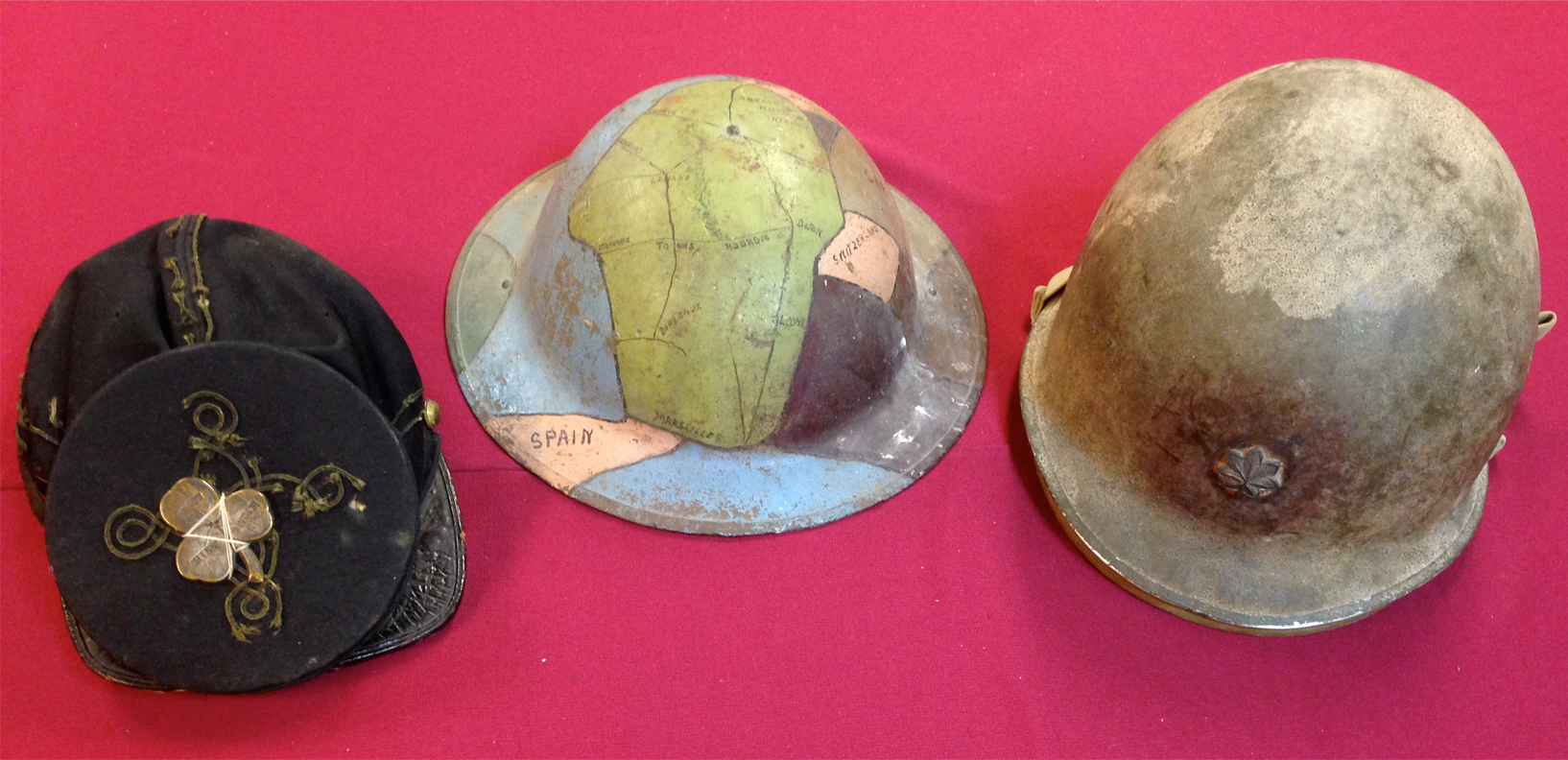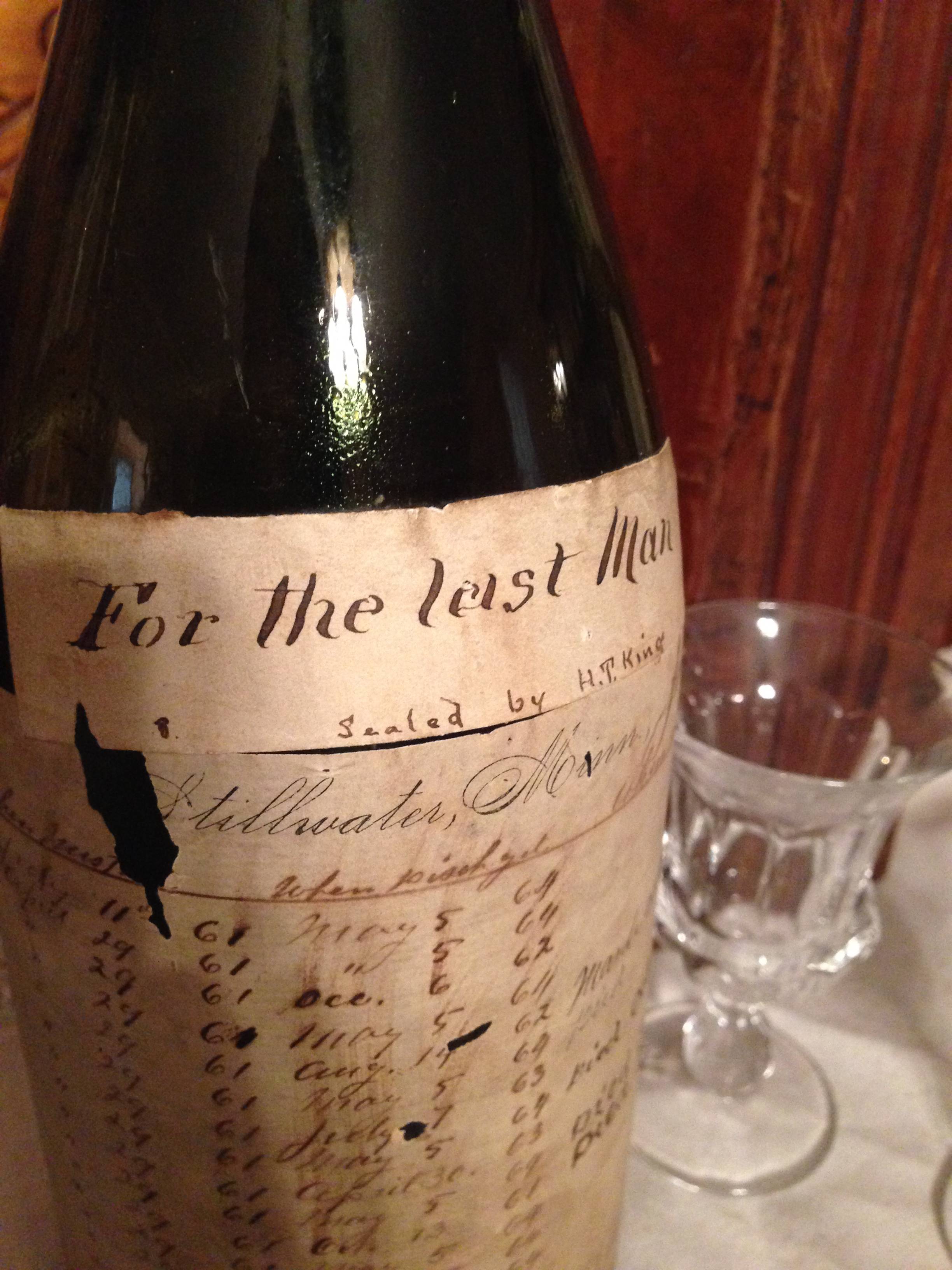Receive the Historical Messenger in your inbox once every two weeks by signing up for our mailing list!
|
This issue: Contents
Wednesday, November 11th, 2015
Editor’s NoteHello e-newsletter readers! Now you’ll immediately notice that today’s issue doesn’t quite fit into our normal schedule. But, since today is Veteran’s Day and tomorrow is Give to the Max Day, I thought it would be fitting to put this brief newsletter together… All across the nation, November 11th is set aside to remember and extend our sincere gratitude towards all who have served in the military. From coast to coast and even here in Stillwater, living servicemen and women are rightly honored in speeches, parades, and even by simple gestures like offering a free malt and burger. But what happens to the memories and stories of veterans who have passed away? Of course for a while, they will be retold and remembered by their loved ones. But what then? This form of oral history has an expiration date. Their widows and children and even their children’s children will all be gone some day. The men and women who risked their lives in the name of our country deserve something more permenant. The Washington County Historical Society has been preserving the memories, stories, and histories of our local veterans for more than 80 years. In almost every room of the Warden’s House Museum, you’ll find at least one artifact tied to the life of a Washington County veteran. These physical objects allow us to peer through the fog of history and realize that these soldiers weren’t just statistics or grainy black-and-white photographs. They were brothers, farmers, mothers, teachers, grocers, and most importantly: people. They are our friends and neighbors – just a few decades removed. And many of these made enormous sacrifices that must be recorded and remembered. Please consider donating to the Washington County Historical Society tomorrow during Give to the Max Day. Your donations allows us to continue re-telling and saving the stories of our veterans for generations to come. Thank you. And of course, a special thank you to all of our veterans. Sean Pallas Historical Messenger editor and Warden’s House Site Manager WCHS NewsGive to the Max Day!
Here’s what you can do to help! – Schedule Your Donation Early! You can log on right now and you can actually schedule your donation to be processed on Give to the Max Day. – Spread the Word! Share our Donation Page on your social media pages and email it to your friends! – Donate! The easiest way to make a difference for WCHS is simply by making a gift! GiveMN keeps it easy by accepting all major cards through their secure online payment system. You don’t even have to register any kind of account! Their website is designed with both PC/Mac and mobile platforms in mind. Thank you all for your continued support of the Washington County Historical Society! Artifacts of our VeteransFrom left to right, the above photograph shows a cap from the Civil War, an American helmet from World War I, and an officer’s helmet from the Second World War. All three belonged to Washingotn County veterans. The soft cap belonged to Samuel Bloomer of Stillwater and is one of the few surviving caps of the First Minnesota Volunteer Regiment. The First Minnesota became famous during the Battle of Gettysburg when the unit suffered 80% casualties in less than 30 minutes on the second day of the engagement. Close Up of the Clover Emblem The doughboy-style flat brimmed steel helmet in the middle is an excellent example of ‘trench art’ which was popular during the First World War. The juxtaposition of artistic expression painted on a combat tool perfectly symbolizes the volunteer soldier of the United States. The helmet is painted with a detailed (if slightly inaccurately drawn) map of western Europe. Another World War I artifact on display at the museum is this typewriter. It was manufactured in 1898, but was carried across the battlefields of France throughout 1918. The soldier who used this machine chronicled where he was stationed by writing the dates and locations in pencil on the typewriter lid. The final helmet is a steel M1 style World War II helmet that belonged to Edwin T Swenson of Washington County. Although you can see a Major’s rank insignia on the helmet, Swenson was eventually promoted to the rank of Colonel. Over 22 million of this type of helmet were produced for American servicemen during the Second World War. It became standard issue for American GI’s through the Vietnam War. Featured ArticleThe Last Man of Company Bby Erica Whalen, former WCHS intern The originators of the last man’s clubs tradition in the Stillwater area were the Civil War veterans of the famous Company B of the First Minnesota Regiment. The Stillwater men who served in the First Minnesota came primarily from the Stillwater Guard, a local militia originally organized in 1856 to protect early settlers in the Stillwater area from local Native Americans. The First Minnesota is known as the first volunteer regiment to reply to President Lincoln’s call for volunteers in 1861.
The Last Man’s Club first met on July 21, 1886, the 25th anniversary of the First Battle of Bull Run, in which the First Minnesota played a prominent role. The members agreed to hold meetings annually on the anniversary of the battle. A stringent set of ceremonies was put in place and adhered to at each meeting. Each was made up of a formal parliamentary meeting, a speech by an invited guest speaker, a dinner, and a memorial to those members who had passed away. The format of the first banquet was to be duplicated each year by the Last Man’s Club and by later last man’s clubs in the Stillwater area. The first years of the Last Man’s Club saw the founding of enduring traditions, many of which survive over a century after their founding. The inaugural meeting saw the implementation of the basic meeting procedure, with John McKusick, the first mayor of Stillwater, as guest speaker. Meetings were held at one of Stillwater’s hotels, the Sawyer House, which today is the site of the Lowell Inn. The club had 34 members by its second meeting in 1887. Also in that year, a bottle of wine was donated with the intention that the “last man” would drink a toast to his fallen comrades at the club’s last meeting. A poem written by Henry Hayden, called “The Last Survivor,” was read at each meeting since its introduction in 1887, with the final verse of the poem attaining special significance to the Last Man’s Club as well as to later clubs of its kind in Stillwater. The poem was dedicated to the last man but also neatly sums up the ideals of the club. It looks back to “the days of ’61” with nostalgia and refers to club’s deceased as “my patriot dead.” The poem also refers to the end of the club’s last meeting, with no answering call from the dead. The Hayden poem makes frequent reference to the Civil War but its last verse proved an appropriate ending for the meetings of the later clubs while maintaining ties with the originator: The camp fire smolders-ashes fall; The clouds are black athwart the sky; No tap of drum, no bugle call; My comrades, all, good-by. By the 1924 meeting of the Last Man’s Club, the three remaining members able to attend voted to change the constitution of the club. Rather than waiting for the last member alone to open the bottle, the present members Peter Hall, John Goff and Charles Lockwood all voted to change the club constitution and have the last two members open the bottle. They tasted the wine, which by this date was sour, and then resealed the bottle for the last man to carry out the planned toast. Charles Lockwood was the last surviving member of the Last Man’s Club at age 88. On July 21st, 1930, he attended the last meeting at the Lowell Inn, which was attended by widows of two members, Mrs. W. N. McClure and Mrs. Nellie Bloomer as well as several other dignitaries . The long table was still set for 34, with 33 of the chairs draped in black crepe. In keeping with the original plan of the club, he poured a glass of wine from the bottle and toasted to his fallen comrades. Although the Last Man’s Club passed into history with the 1930 meeting, the conventions of the club were well remembered by Stillwater residents. The veterans of the next large conflict would pick up the traditions established by the 34 men of the Last Man’s Club and carry them on. The continuation of the founding traditions of the Last Man’s Club shows that later veterans saw their actions in the tradition of the famed heroism of the men of the First Minnesota. |
Upcoming Events
More information: WCHS Events >>> Preserve the Past, Share in the Future!Membership is one way that you can help support the Washington County Historical Society. Your membership helps us collect, preserve, and disseminate the history of Washington County for county residents and visitors in the belief that a historical perspective enhances our understanding of community and sense of place. Benefits of membership:
The Washington County Historical Society has depended on membership ever since it was formed in 1934. Please show your support for the organization by becoming a member today. More: WCHS Membership >>> Mission StatementWashington County Historical Society collects, preserves, and disseminates the history of the county and state of Minnesota.
|
|||||


 Company B of the First Minnesota was involved in many of the most well-known battles of the Civil War. It saw action at Bull Run, Yorktown, Antietam, Fredericksburg, Chancellorsville, and Gettysburg and was present at Appomattox Court House for General Lee’s surrender on April 9th, 1865. According to Anita Buck in her article on the H & H Last Man’s Club, the rallying cry of the 135th infantry of Company B became “to the last man,” a phrase used at Gettysburg originally to help spur on the troops (Army, May 2004). The phrase also helped to establish the Last Man’s Club after the war.
Company B of the First Minnesota was involved in many of the most well-known battles of the Civil War. It saw action at Bull Run, Yorktown, Antietam, Fredericksburg, Chancellorsville, and Gettysburg and was present at Appomattox Court House for General Lee’s surrender on April 9th, 1865. According to Anita Buck in her article on the H & H Last Man’s Club, the rallying cry of the 135th infantry of Company B became “to the last man,” a phrase used at Gettysburg originally to help spur on the troops (Army, May 2004). The phrase also helped to establish the Last Man’s Club after the war.